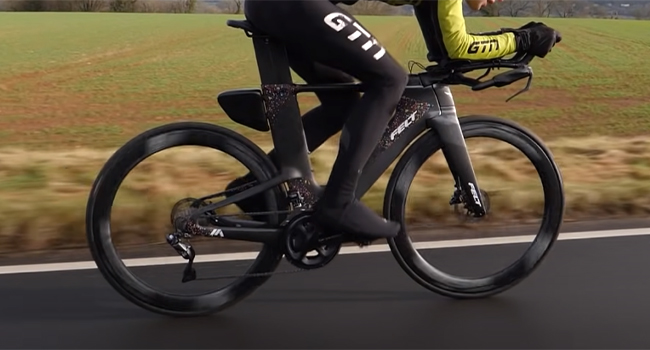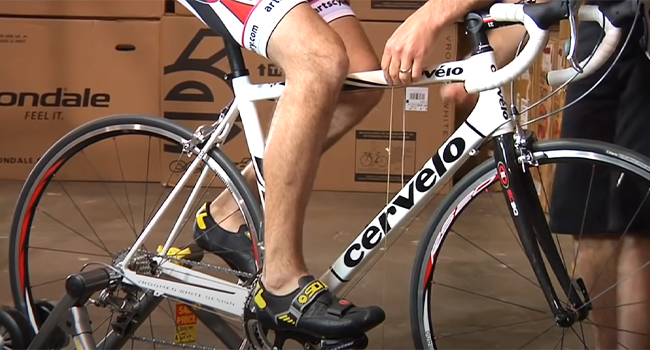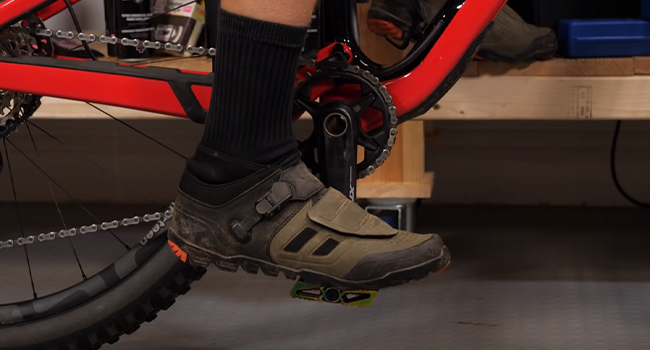Ankles that roll outwards or inwards cause undue strain on the muscles and lead to stress or sprain of the foot and ankle. Knee, hip, and lower back pain are some of the most common side effects of improper ankling. It can cause muscle fatigue, affecting overall mobility and causing you to tire out too quickly.
Ankling is a cycling technique that involves rotating the ankles during the pedal stroke. You pedal by placing your toes downwards while keeping your heel downward.
This is also known as ‘plantar flexion. When cyclists push the pedals down, they point their toes downward and flex their ankles when bringing the pedals up.
This article will discuss what ankling is, its benefits in cycling, how to incorporate it into your cycling routine, and tips for perfecting your ankling.
What Is Ankling In Cycling? 7 Key Benefits Explained

Ankling in cycling refers to flexing your ankles while pedaling, allowing for more efficient use of your leg muscles and improving cycling performance. Here are some of the various benefits of ankling in cycling.
Improves Pedaling Efficiency
The ankling motion enables a more excellent range of motion and engagement of the lower leg muscles, which requires less effort from your quadriceps and hamstrings. This increased muscular engagement leads to better pedaling efficiency, transfers power better, and can lead to a smoother, more consistent pedal stroke.
Reduces the Risk of Injury
Ankling helps protect the knee joints by minimizing the joint flexion angle and reducing the stress on the knee’s cartilage. Activating different muscle groups like the tibialis anterior and the peroneus brevis while cycling can help prevent overuse injuries in the calves and feet.
Increases Power Output
By engaging the entire lower leg, ankling helps maximize power output. With more power generated from each stroke, you can climb hills more efficiently and achieve higher speeds on flat terrain.
Enhances Endurance
Ankling promotes blood flow and reduces muscle fatigue by enabling more oxygen to be delivered to your muscles. By reducing the energy expenditure of your lower body muscles, this technique can help you cycle for longer without feeling as tired.
Reduces Muscle Fatigue
By taking the pressure off your quadriceps, which are some of the most significant and fatiguing muscles used in cycling, you’ll reduce the overall fatigue of your lower extremities significantly. This can help ensure you don’t tire out so quickly and can help you improve performance during long-distance rides.
Increase Comfort
Ankling can increase comfort during your ride. By engaging your calves and ankles, you help stabilize your lower legs against the pedals, preventing unnecessary movement and reducing the risk of developing cramps or other discomfort during your ride.
Increase Power Output
By pedaling with a circular motion that involves ankling, you engage more muscles in your legs, including your calves, ankles, and arches. This engagement increases power output, allowing you to apply force to the pedals throughout the entire pedal stroke, maximizing your energy output.
Integrate Ankling into Your Cycling Routine: 4 Ways

Ankling is a technique that involves moving your foot in a circular motion while pedaling. Rather than just pushing down on the pedals, you move your foot in an oval motion, creating a more efficient pedal stroke and reducing the strain on your joints. Here are some tips for incorporating ankling into your cycling routine.
Proper Pedal Placement
The key to proper ankling is having the correct pedal placement. You should aim for the ball of your foot to be in the center of the pedal. This allows for a more natural motion when using the ankling technique. If your foot is too far forward or too far back on the pedal, it can hinder your ability to utilize ankling effectively.
Maintaining a Steady Cadence
Another critical aspect of ankling is maintaining a steady cadence. This means pedaling consistently and keeping your revolutions per minute (RPM) within a specific range.
Its range can differ depending on your cycling type, but aim for a cadence between 80-100 RPM. This will allow you to balance speed and efficiency well while utilizing the ankling technique.
Hill Climbing Technique
Ankling can also be an effective technique for hill climbing. When climbing a hill, you want to stagger your ankling motion. Start with a more significant throwing motion for the downward pedal stroke and a more minor pulling motion for the upward pedal stroke. You will be able to maintain a consistent cadence and generate more climbing power.
Pedaling Drills and Exercises
You can incorporate pedaling drills and exercises into your training plan to build up your ankling technique. One movement is to pedal with one foot at a time, focusing on the circular motion and keeping your cadence steady. Another drill is to pedal with a higher gear, requiring you to use more of your leg muscles and your ankling technique.
5 Tips and Tricks for Perfecting Your Ankling Technique
Ankling may feel unnatural initially, but with regular practice and proper technique, it can become a valuable addition to your cycling arsenal. Here are a few tricks for mastering your ankle technique.
Club Foot Exercises
One of the best ways to improve your ankling technique is through a series of club foot exercises. Club foot exercises require you to pedal with the ball of your foot while raising your heel, which is the same motion used in ankling. You will develop the strength and coordination necessary to execute proper ankling by practicing club foot exercises.
Foot Positioning
Foot positioning also plays a critical role in effective ankling technique. When cycling, aim to position the ball of your foot over the pedal axle, allowing you to apply more force to each stroke. You should maintain a stable foot position throughout the pedal stroke to ensure consistent energy transfer.
Cadence Monitoring
Monitoring your cadence is another effective way to improve your ankling technique. The cadence is the rate at which your legs pedal, and maintaining an optimal cadence can help the cycle feel smoother and controlled. Aim to maintain a cadence between 80 and 100 revolutions per minute to maximize your performance and reduce the risk of injury.
Using the Right Gear
Using the right gear is essential for effective ankling. When cycling up an incline, switch down a gear to reduce resistance and make it easier to maintain a smooth pedal stroke. The result will be an increase in performance and a reduction in fatigue.
Regular Practice and Consistency

Regular practice and consistency are critical to mastering effective ankling techniques. Incorporate ankling into your regular cycling routine and dedicate time to refining your technique. With practice, your ankling will become more natural and efficient, allowing you to maximize your energy and improve your overall cycling performance.
Conclusion
Ankling in cycling is a technique that can take your riding to the next level. Practice and be patient, but it pays off in spades. Pedaling in a circular motion can improve riding efficiency, reduce muscle strain, and boost your speed and power output.
If you want to take your cycling game to the next level, consider incorporating ankling into your training routine. Remember, every pedal stroke counts on your journey to total success.
FAQs
Can Ankling in Cycling Improve My Performance?
Yes, using the ankling technique in cycling can help improve your performance as it helps generate more power with each pedal stroke. By utilizing the full range of motion in your ankles, you can increase your cadence and speed, making it easier to tackle hills and ride for longer distances.
How Does Ankling Differ From Regular Pedaling?
Ankling involves a greater range of motion and a more fluid motion during pedaling than just pushing down with the lower leg. Ankling helps achieve an even distribution of the workload among different muscle groups by resulting in a pedal stroke that is more circular, even, and powerful.


